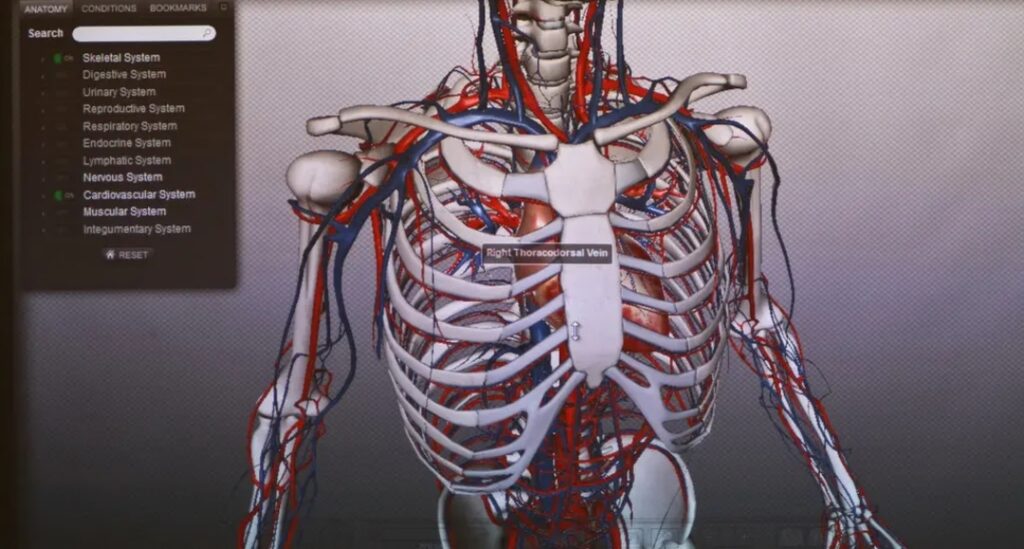Virtual Anatomy Classes; Simulation of Human Anatomy in a Virtual Environment
Virtual anatomy class is an interactive and engaging mode of learning human anatomy and physiology. These classes use virtual reality (VR) simulations, 3D models, and animations to create highly realistic and immersive representations of the human body, which can be used to teach students about the structure and function of different organs and systems.
One of the main benefits of virtual anatomy classes is that they allow students to interact without any fear of mistakes. Unlike traditional anatomy classes, which rely on textbooks and human cadavers, virtual anatomy classes allow students to explore the human body in a virtual environment, and interact with the different structures and systems in a way that is not possible with traditional methods. Students can dissect a virtual model countless times and practice anytime. This can help students to better understand the underlying anatomy and physiology and to develop a deeper understanding of how the body works.
Another benefit of virtual anatomy classes is that they can be used to create highly realistic simulations of medical procedures and scenarios. This can provide students with a safe and controlled environment to practice their skills and can help to prepare them for real-world situations. For example, students can use VR simulations to practice surgical procedures, such as dissections, which can help to improve their dexterity and precision. These classes can be accessed remotely and on demand which allows for flexibility and accessibility. Medical students and professionals can access virtual anatomy classes from anywhere and at any time, making it easier for them to fit learning into their busy schedules.
Virtual anatomy classes can also be used to personalize learning experiences, by providing students with tailored feedback and recommendations based on their performance and learning style. For example, a learning management system can track student progress and suggest additional resources or activities that may help them improve.
In conclusion, virtual anatomy classes can be used to create highly realistic simulations of medical procedures and scenarios and can help to prepare students for real-world situations. They also offer flexibility and accessibility, allowing students to learn at their own pace and on their own schedule. As technology continues to evolve, it is likely that we will see even more exciting and innovative developments in this field in the future.

